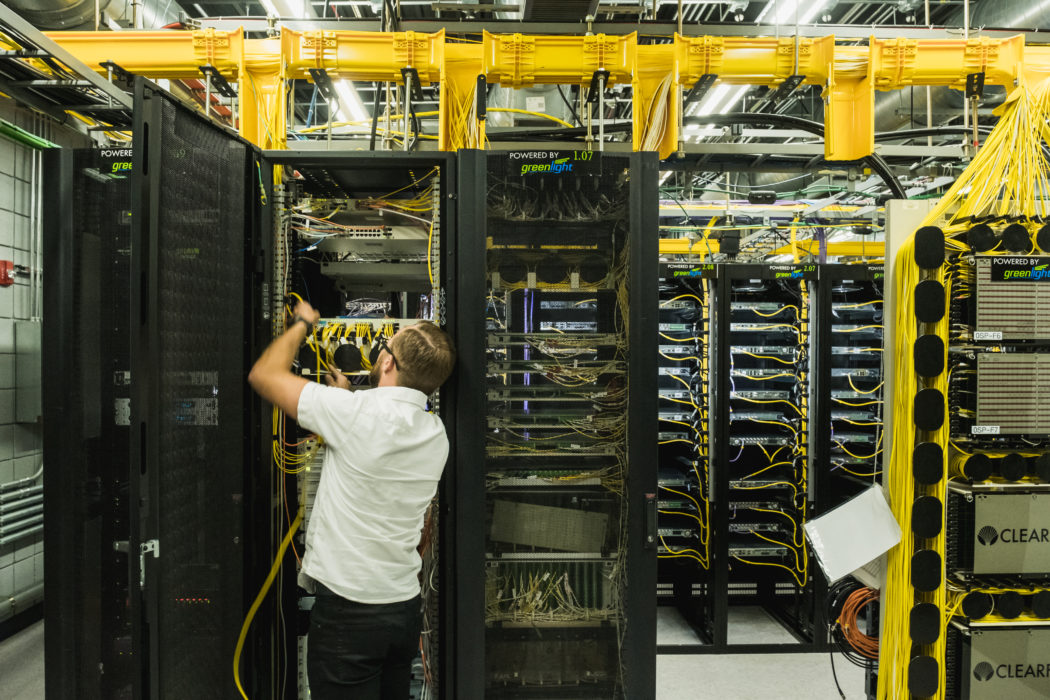Billions of dollars in federal funds are poised to flow directly to state and local governments to improve broadband in the next two years.
At the same time, many states have rolled back regulations prohibiting municipalities from owning broadband infrastructure.
Taken together, these factors mean cities, towns and counties will have more flexibility than ever before to solve their broadband challenges.
But the question remains: What is the best way to do this?
One common route municipalities may take given these changes to the broadband landscape is to form a public-private partnership. We at the Center on Rural Innovation have seen how valuable these relationships have been over the course of our work with communities across the country, and wanted to share some of the basics for others setting out on the path to high-speed connectivity.
What are public-private partnerships?
At its most basic, a public-private partnership (PPP) for broadband is any collaboration between a municipality or other public entity and a private enterprise.
A simple version of this could be a provider deploying broadband service to town buildings in exchange for expedited or discounted permitting.
A more substantive and impactful form involves public ownership of broadband infrastructure and private operation of that network. In this scenario, a town or municipal utility group pays to build and deploy the last-mile fiber, and then contracts with a private operator to run the broadband service.
Communities in CORI’s Rural Innovation Network have used a variety of models to achieve gigabit-speed internet, including the aforementioned model of public ownership and private operation
In Traverse City, Michigan, for example, the city-owned electric utility partnered with Fujitsu Network Communications for both design and construction as well as operation and maintenance of its fiber network.
Why public-private partnerships are great for fiber broadband networks
The resiliency and longevity of fiber broadband makes it a clear win from a public-policy perspective, but it is relatively expensive to deploy. Once established, though, it’s easily scalable as bandwidth needs increase — and it usually takes 15 years for fiber networks to net out cheaper than other infrastructure.
As such, PPP structures are particularly useful in rural areas where commercial telecom vendors aren’t inclined to invest their own capital for minimal return.
Plus, when public groups take ownership of fiber networks, they can ensure certain public-good standards are met. Every mile of every road can get connected, and they can often codify specific terms in a PPP agreement that a private company might not employ on its own, such as net neutrality.
Importantly, this model also allows private companies to do what they do best, operate networks efficiently and expertly.
What goes into a public-private partnership agreement?
There are three primary categories of elements to PPP broadband agreements: Roles, finances, and values. These can vary greatly from one relationship to another and take different forms depending on a community’s needs.
Roles include construction, maintenance, fundraising, and ownership — the logistics of setting up and running a broadband network. Who is building the infrastructure? Who will be responsible for upkeep? Will both entities be involved in raising money to fund the project? Who will own the backbone of the network? Who will own the drops and installations?
Finances address how money will flow into and out of the broadband network.
This discussion starts with investment. Will the private entity contribute to construction costs and have some responsibility sharing the risk as well as the reward?
Then there are lease terms to negotiate. Typically the private company will lease space on the network or use the network at a rate that more than covers the public partner’s debt service. But will lease payments be structured based on mileage? Customers? A simple percentage of the debt service?
The important piece with this type of financial arrangement is aligning the incentives to make sure both parties benefit from getting people connected as fast as possible. One effective model to achieve this is a lease agreement in which the private partner pays a monthly fee for each connected customer, and a smaller fee for each potential customer the network passes.
It’s clearer than ever that high-speed broadband is essential in the 21st century — communities without it are not just risking their financial well-being, but their educational and physical health as well.
Another important financial element to navigate is the end-user fee — what the private entity can charge consumers for service. At the end of the day, both sides need to feel confident that the rates will make the network viable for all parties.
Values, or network standards, are the last important piece of the agreement that ensure customers are treated right and service is excellent. Municipalities should push to establish standards like data privacy, net neutrality, no data caps, and customer service response times.
Best practices for structuring a public-private partnership
Often, the first step toward finding a private partner and negotiating an agreement is to put out a request for proposal (RFP) to get baseline information from potential network operators about what they would seek in a partnership. The RFP process helps sort out the options, but further negotiation is almost always needed.
Here are a few crucial things to keep in mind during that process:
- Identify what you’re willing to compromise on and what is a deal-breaker. Maximize your leverage, keep your options open, but be willing to walk away from the table if your must-haves aren’t there.
- Decide on ways to guarantee that the risk and reward are shared by both partners. Push for the private entity to contribute capital to the project, or help make up the difference if there is a revenue shortfall.
- Model what the possible revenues and expenses for the network will be for both sides. Public partners need to know that the terms can comfortably cover their debt service, and also have an idea of how much the private partner stands to profit. Enter the financial negotiations armed with the knowledge needed to reach a fair, sound agreement.
- Vet the agreement thoroughly with legal counsel and financial experts experienced in raising funds for broadband networks. This will help avoid any contract terms that could become deal-breakers for potential financiers and keep the project on track.
It’s clearer than ever that high-speed broadband is essential in the 21st century — communities without it are not just risking their financial well-being, but their educational and physical health as well. For those looking to seize upon this unprecedented moment of opportunity, a public-private partnership might just be what it takes to unlock a future of possibility.
Stay connected
At the Center on Rural Innovation, we are working with rural communities across the country to improve broadband availability. To learn more about our work in this space, be sure to check out our blog and sign up for our newsletter.



